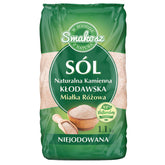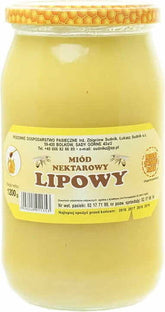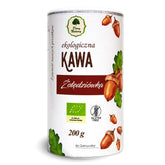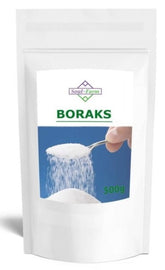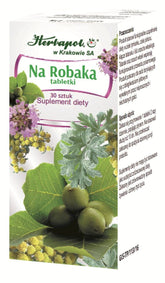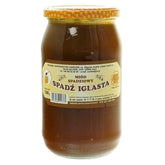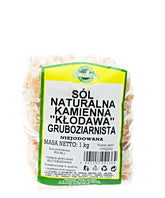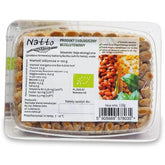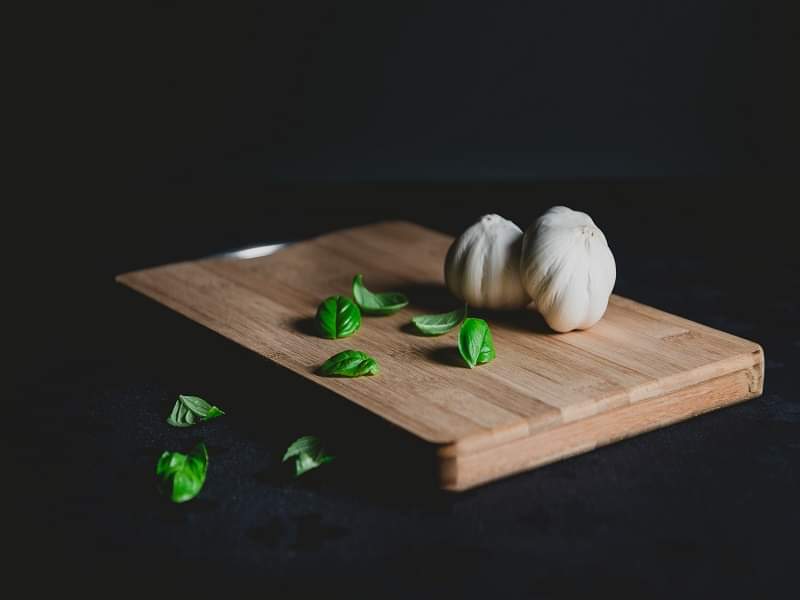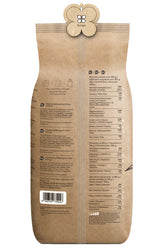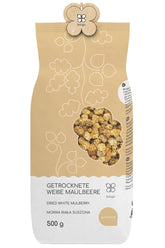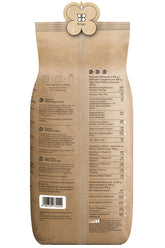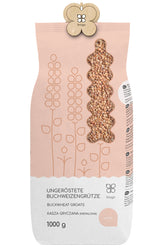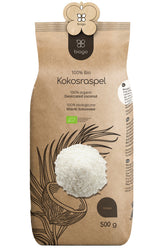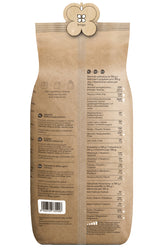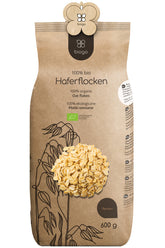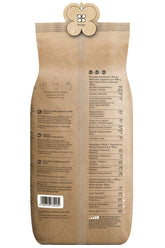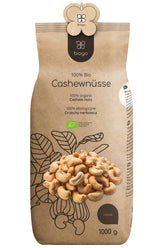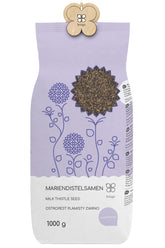Garlic - an unusual plant and its properties
Chemical composition of garlic
Effect of garlic on the immune system
- The effect of garlic on the circulatory system
- Effect of garlic on dementia and Alzheimer's disease
- Garlic and skeletal health
- Contraindications to eating garlic
- Summary
- Bibliography
Opinions about garlic vary widely. For many, it's an essential part of their daily diet. It's a spice used in virtually every dish, but others consider it superfluous and aren't fans of its distinctive pungent taste and smell. There's also a group that doubts its effectiveness in supporting the treatment of various illnesses. Garlic is currently enjoying a resurgence in popularity; it's no longer just an addition to dishes or as a spice, but is also increasingly used as a therapeutic agent and to support the treatment of various illnesses due to its many health-promoting properties. We'll examine what's mythical and what's true, and how we can use it—not just in the kitchen.
Facts about garlic
Garlic, also known as common garlic (Allium sativum L.), is a perennial herb that is now cultivated worldwide. It originates from Central Asia. It belongs to the same genus as onions, chives, and leeks and has been used since ancient times in the Far East, where, in addition to its use as a spice, it is also one of the oldest documented medicinal plants. The first mention of garlic dates back over 5,000 years ago. Even in ancient times, its health-promoting properties were valued. Garlic was mentioned in manuscripts from ancient Rome, Greece, China, and India. Even then, its healing properties were known, and it was used to improve digestion, cure wound infections, and improve physiological performance and condition. For this reason, it was given as a gift to ancient athletes before the Games or to gladiators fighting in the Colosseum.
Chemical composition of garlic
Garlic is low in calories and has a very high nutrient density. The average weight of one clove is about 3 grams. This serving contains 4.5 kcal, of which 0.2 grams are protein and 1 gram are carbohydrates. 100 grams of garlic contains about 152 kcal, but it should be noted that, given the inability to consume it in such large quantities, the sulfur substances it contains are much more valuable. It also provides nutrients such as selenium, manganese, vitamin B6, and fiber. It contains small amounts of copper, potassium, calcium, phosphorus, and vitamin B1.
Garlic's characteristic taste and smell are due to many different sulfur compounds, especially fat-soluble ones. These compounds also determine its beneficial effects on the human body. Unfortunately, they can also cause side effects such as irritation of the mucous membranes, skin, and digestive system. By crushing a garlic bulb, we trigger a series of chemical reactions, resulting in the formation of many new biologically active substances. Among them are those with the most powerful therapeutic effects: allicin, alliin, ajoene, S-allylcysteine, and diallyl sulfide (DAS).
Effect of garlic on the immune system
Garlic has a beneficial effect on our immune system. Its role in this case cannot be overestimated. It is therefore not surprising that it is becoming an increasingly important component of measures to support natural immunity. This is confirmed by research conducted in Australia. The aim of the study was to investigate how the active ingredients in garlic affect the susceptibility of subjects to infections. Of the 146 people in the study, the group that regularly took garlic supplements had fewer infections (24) than the placebo group (65 infections). Furthermore, the duration of such treatment was on average 3.5 days shorter than the control group. The doses used in the studies ranged from 500 mg to 2650 mg of aged garlic extract per day.
This extract is so effective due to the presence of allicin, a natural antibiotic, and thiosulfates, which, among other things, make it effective against bacteria found in the mouth. Unfortunately, only fresh garlic, which isn't exposed to high temperatures, has such potent properties. This makes it difficult to use in practice due to its pungent taste and smell. Furthermore, large quantities would have to be consumed, which is why garlic extracts and extracts are the solution.
The effect of garlic on the circulatory system
This is the most extensively studied property of garlic to date. It lowers blood pressure and total cholesterol, but also LDL cholesterol, which is harmful to our health. It increases HDL cholesterol, also known as "good cholesterol," and reduces the risk of atherosclerotic disease. Garlic and garlic supplements containing S-allylcysteine can significantly lower blood pressure.
More than 20 clinical studies have been analyzed, and the results showed that garlic supplementation, in the form of an extract or extract, was able to lower both diastolic and systolic blood pressure. It should be noted that these studies were conducted only on patients diagnosed with hypertension, by 8-9 mmHg and 6-7 mmHg, respectively, compared to the placebo groups. To better illustrate this, I would just like to mention that this is a value comparable to that seen with antihypertensive medications. Interestingly, this effect was only observed in the hypertensive group; in healthy individuals, blood pressure remained unchanged despite taking the same amount of the supplement. Garlic also has a positive effect on the regeneration of damaged heart muscle cells. The intake of 1000 mg of raw garlic by people with atherosclerosis led to improved performance during physical exercise.
Effect of garlic on dementia and Alzheimer's disease
This is another little-known fact. Garlic can be helpful in reducing the symptoms of the aforementioned diseases. Due to the fact that it contains large amounts of antioxidants, which significantly reduce the amount of free radicals. Free radicals cause oxidative tissue damage and significantly contribute to the acceleration of aging and degeneration of cells, including those in the brain. Studies have confirmed that garlic can positively influence the activity of antioxidant enzymes, which in turn reduce oxidative stress.
Garlic and skeletal health
The situation is somewhat different here. Although no human studies have been conducted to determine the effects of substances found in garlic, studies have been conducted on rodents. They showed increased levels of estrogen in women after consuming garlic extracts. Following this line of reasoning, this may lead to a reduced risk of bone loss in postmenopausal and perimenopausal women. Then, the risk of bone tissue deterioration, which can lead to osteoporosis, increases significantly. This may indicate that both the supplement and the fresh product have a positive effect on bone health in women. Plants such as onions and garlic may also prevent joint disease, but research is still ongoing.
Contraindications to eating garlic
Wondering if there are any contraindications to consuming garlic? As with any food product, we'll find them here. The first group of people are those who are naturally allergic to it. People with blood clotting disorders and those taking blood thinners should also be cautious. In all cases, medical advice is required.
Summary
In summary, garlic is best used as a spice or as an additive to dishes. It is very difficult to consume it in large quantities, especially in its raw form. We can encounter it in many forms. It can be found in the form of whole heads and cloves, in pastes, extracts, garnishes, or as a powdered spice or pickled, but also pickled. It can be added to a wide variety of dishes, including meat and vegetable broths, soups, and sauces. Its strong smell and flavor allow it to enhance many dishes with its unique flavor and aroma. In this form, it is easier to eat, but let's remember the loss of nutritional value, along with thermal processing, pickling, or pickling.
It should be noted that the largest producer of garlic is China, but as the saying goes, "He who praises another does not know his own," Polish garlic is of much higher quality and nutritional value than that from the Far East. Despite the significantly higher price, its quality is incomparable. Why, and which one should we choose, should be obvious.
In times when various supplements for every single ailment dominate, returning to nature and herbs is the best choice. We strongly encourage you to host garlic in your kitchen and experiment with new dishes using its participation. It would be a shame not to take advantage of this goodness of nature.
Bibliography:
- Majewski, M. (2014). Allium sativum: Facts and Myths. Human Health. Annals of the National Institute of Hygiene, 65(1).
- Kyo, E., Uda, N., Kasuga, S., & Itakura, Y. (2001). Immunomodulatory effects of aging garlic extract. The Journal of Nutrition, 131(3), 1075S-1079S.
- Amagase H, et al. Ingestion of garlic and its bioactive components. J Nutr. (2001)
- Block E. The Chemistry of Garlic and Onions. Science Am. (1985).
- Garlic. Food Dictionary, Epicurious.com. Archived from the original on May 24, 2012. Retrieved April 14, 2010.
- Dhawan, V., & Jain, S. (2005). Garlic supplementation substantially prevents oxidative DNA damage in hypertension. Molecular and Cellular Biochemistry, 275(1), 85-94.
- Josling, P. (2001). Preventing common cold with a garlic supplement: a double-blind, placebo-controlled study. Advances in Therapy, 18(4), 189-193.
- Williams, FM, Skinner, J., Spector, TD, Cassidy, A., Clark, IM, Davidson, RM, & MacGregor, AJ (2010). Dietary garlic and hip osteoarthritis: evidence for a protective effect and putative mechanism of action. BMC Musculoskeletal Disorders, 11(1), 1–8.
- https://en.wikipedia.org/
- https://www.agrofakt.pl/bedzie-cena-czosnku-2018-r/
- Kyo, E., Uda, N., Kasuga, S., & Itakura, Y. (2001). Immunomodulatory effects of aging garlic extract. The Journal of Nutrition, 131(3) 1075S-1079S.
THE PUBLISHER'S CHOICE
Almonds 1 kg BIOGO
- €11,69
€13,75- €11,69
- Unit price
- / per
Walnuts 800 g BIOGO
- €8,65
€10,18- €8,65
- Unit price
- / per
Dried organic mango 400 g BIOGO
- €10,99
- €10,99
- Unit price
- / per
Dried White Mulberries 500 g ORGANIC
- €5,84
€6,87- €5,84
- Unit price
- / per
Dried organic figs 800 g BIOGO
- €30,12
- €30,12
- Unit price
- / per
Unpeeled buckwheat groats 1 kg BIOGO
- €2,81
€3,31- €2,81
- Unit price
- / per
Organic coconut flakes 500 g BIOGO
- €10,07
- €10,07
- Unit price
- / per
Organic oat flakes 600 g BIOGO
- €3,77
- €3,77
- Unit price
- / per
Organic cashew nuts 1 kg BIOGO
- €19,99
- €19,99
- Unit price
- / per
Milk thistle seeds 1 kg BIOGO
- €3,99
- €3,99
- Unit price
- / per

